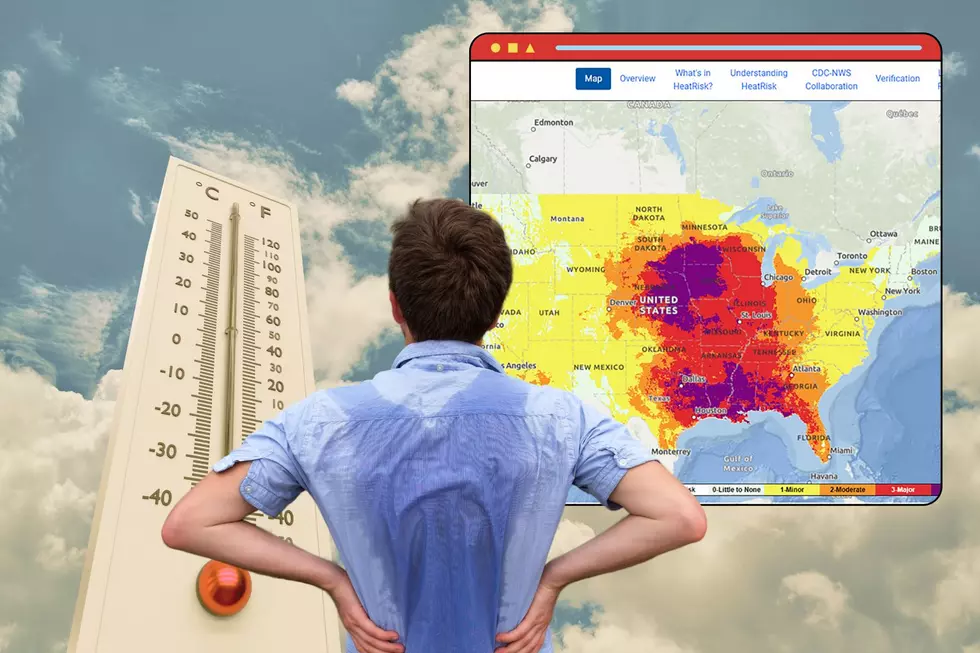
How Hot Will It Be This Summer? So Hot the National Weather Service Has Launched a New Tool to Measure It
The temperature rises as summer approaches, and many Americans wonder if this summer will be as brutally hot as 2023, a year climatologists noted as the hottest on record.
How do we keep ourselves and our families safe during the next heat wave? Meteorologists and doctors have teamed up to expand Heat Risk to the public--a new tool that helps us do just that.
What is 'Heat Risk?'
The National Weather Service partnered with two other government organizations, the National Oceanic and Atmospheric Administration and the Centers for Disease Control and Prevention, to create a forecasting tool to measure heat's impact on our health.
How is 'Heat Risk' Measured?
Meteorologists look at the climate history of an area and compare that data to what's currently in the forecast, noting how much of a deviation from the norm a potential heat wave could bring. That information is reviewed along with the timing and duration of any upcoming heat event as well as the impact that excessive heat could have on residents in the area.
All these factors combined reveal the true 'Heat Risk' in any given forecast area. Heat Risk values of 0 to 4 are then assigned based on the danger posed by the heatwave.
How is 'Heat Risk' Different Than the Heat Index?
Those of us in warmer states are well-versed in the 'Heat Index,' a value that combines an area's relative humidity with its forecast temperature. Heat Risk takes both of these values into consideration while also looking at other factors like:
- Historic Climate Data
- Time of Year
- Length of Heat Wave
- Overnight Temperatures
- Health Impacts of Prolonged Heat
Heat Risk gives meteorologists a better way to accurately convey the impacts a heat wave can have on our health and safety.
All Summers Are Hot--Why Do We Need a 'Heat Risk' Tool?
Recorded data from the National Oceanic and Atmospheric Administration shows our summers are getting warmer.
In a press release, NOAA Administrator Rick Spinrad, PhD stated why Heat Risk is needed now more than ever:
Climate change is causing more frequent and intense heat waves that are longer in duration, resulting in nearly 1,220 deaths each year in the U.S. alone [.] Last year was the warmest year on record for the globe, and we just experienced the warmest winter on record. HeatRisk is arriving just in time to help everyone, including heat-sensitive populations, prepare and plan for the dangers of extreme heat."
How Can I View My City's Heat Risk?
The National Weather Service's Heat Risk tool can be viewed HERE. Bookmark the site and stay informed this summer-- you can even provide feedback to the NWS HERE.
LOOK: Was 2023 The Hottest Summer On Record?
Gallery Credit: Meg Dowdy
LOOK: Most dangerous states to drive in
Gallery Credit: Katherine Gallagher
More From 97.3 ESPN










